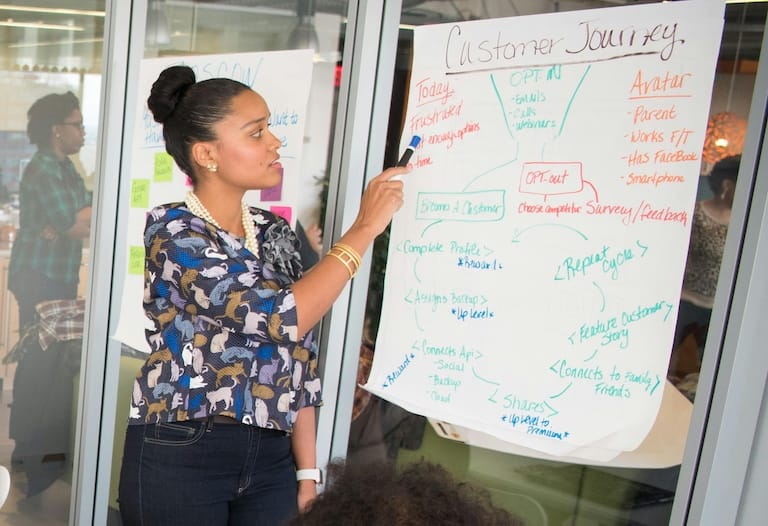
Donna
June 11, 2025
7 ways to have more effective meetings
July 4, 2025FURTHER EXPERTISE
The Art of Difficult Conversations: A Manager’s Guide to Getting Them Right
Expert Opinion from Rich Watts published June 23, 2025
We’ve all been there. That moment when you are at work and your stomach drops because you realise you need to have a difficult conversation. You’ve got to talk about to a colleague about something that might be hard to hear or hard to say.
It could be about performance. A clash between team members. A restructure. Or maybe it’s simply giving honest feedback to someone you really like.
Whatever the situation, difficult conversations come with the territory of leadership and management. And yet, too often, they’re pushed to the bottom of our to-do list.
In our recent Further Webinar with Further communication expert Faye, we explored how managers can approach difficult conversations with clarity, care and confidence. This article shares the key takeaways and some thoughts about how you can put Faye’s tips into practice.

SURPRISING SECRET NO.1
What makes a conversation “difficult”?
We started the webinar with the most important question. We need to understand the psychology behind difficult conversations before we can become great at them.
It’s not always the topic itself. Often, it’s the emotional weight we attach to it that makes a conversation difficult.
We might worry about damaging a relationship, upsetting someone, getting it wrong, or not knowing how they’ll respond. We might feel uncomfortable with the subject or unsure of our own position. All of this can lead to delays, spiralling worry and avoiding the conversation altogether.
But as Faye reminded us, most difficult conversations turn out to be easier than we feared, once we actually have them.
It’s not always the topic itself. Often, it’s the emotional weight we attach to it that makes a conversation difficult.
View the recording of the Art of Difficult Conversations Webinar
TOP TIPS
Three practical ways to have better difficult conversations
1. Start with your intention
Before you say anything, check in with yourself. Ask:
- What am I hoping to achieve?
- Am I here to support, or to offload?
- Am I emotionally ready for this?
If your intention is to vent, wait. If you’re feeling emotionally charged, take 10 minutes or sleep on it. Perspective is key. The goal is to have a conversation that’s useful and not just full of negative emotion.
Golden rule: Speak when you’re ready to listen.

OPEN YOUR EARS
2. Talk less. Listen more.
Once you’ve shared your key message, stop talking. Apply the 70:30 rule: listen for 70% of the time, and speak for 30%.
Why? Because people are far more likely to own the outcome when they’ve had the space to shape it.
Ask open questions. Get curious. Let silences hang. Use their own words back to them to show you’ve heard and understood and that you have not just “waited your turn” to speak. This is where collaborative problem-solving starts.

DON'T FORGET...
3. Lead with compassion
Compassion isn’t just kindness. It’s recognising what’s going on for someone and taking action that helps.
Start by acknowledging the other person’s perspective. Empathise with how the issue might be landing for them. And then ask: What do they need to move forward?
Truly compassionate leadership lies in intelligent, thoughtful action.
FINISHING UP
What about after the difficult conversation?
The conversation doesn’t end when the meeting does. The follow-up is where trust is built.
- Check in. Not just once, but regularly.
- Acknowledge effort and progress, even if it’s small.
- Protect confidentiality, even if others know the conversation happened.
- Offer support: ask: “What do you need from me to help this change stick?”

And finally… end on a strong note
Summarise what’s been agreed. Clarify next steps. Reassure them that you believe they’re capable of moving forward and that you mean it.
If they showed up, stayed open, and engaged with the conversation? Then thank them. Genuinely. Being part of a difficult conversation is a brave thing to do.
Key difficult conversation reminders for every manager
- Don’t wait too long. The earlier you have the conversation, the easier it tends to be.
- Difficult doesn’t mean formal. A quiet word in the moment can change everything.
- If you care about the person and the issue, it’s probably your conversation to have.
- Being human isn’t a weakness. It’s your biggest strength.
Want support building a positive communication culture in your team? Or help equipping managers to handle conversations with more confidence and care?
We’d love to talk.
👉 Get in touch or find us on LinkedIn



